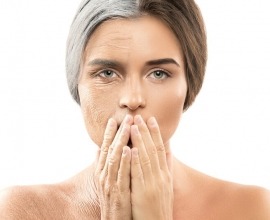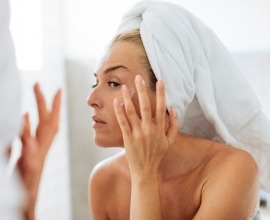Why Does Society Hold Men and Women to Different Beauty Standards?
First impressions are everything. In the world we live in, the way we look plays a large role in our first impressions of people. Whether we like it or not; conscious or subconscious; we judge people by the way they look. A statuesque blonde with perfectly coiffed hair wearing the latest fashions - model. A clean cut man in a crisp, neatly pressed suit and expensive briefcase - successful businessman. A twenty-something year old in faded blue jeans, unbuttoned flannel shirt, scruffy High Tops and an overstuffed backpack - student.
So if the way we look is important for everyone, why is it that society places more pressure on how women look than men? Actors on the red carpet don't get asked who they're wearing or what brand their watch is like their female counterparts do. The camera doesn't pan up and down an actor during red carpet interviews to showcase their choice of attire like it does for actresses.

When it comes to promoting a healthy body image and looks, women still remain the larger focus and target market of health and beauty companies. So why does this discrepancy exist?
The issue may lie in society and culture itself where traditionally, body image and how you look has predominantly been seen as a "female problem".[1] As a result of this, studies indicate that it has driven men to be quieter and more reluctant to talk about their body image problems lest they be emasculated or ridiculed by their peers.
The problem of men lacking the space, voice and acceptance of talking about body image is that it has led minimal research being done on the subject. While this subject is slowly increasing in popularity, it still lacks the comprehensive depth and breadth that studies on female body image has.[2]
When men do speak up about being unhappy about their looks, many assume that they are dissatisfied with a lack of defined muscle.[3] In reality, men's dissatisfaction with their physical appearance is much more complicated, with some studies revealing that men who struggle with body image feel either "too thin or too heavy to meet the male ideal".[4]
While women may be more exposed to social situations that make them more aware and conscious about their physical appearance, men are not entirely immune but the continued lack of research, interest and willingness to talk about male body image has led to numerous problems - men with atypical eating disorders or psychological issues regarding body image usually, out of shame and reluctance, put off seeking plastic surgery and counseling far longer than women.[5] This may aggravate their issues, leading to even more problems.

In a study conducted by Daniel and Bridges in 2013, they found that around 95% of college men were dissatisfied with their bodies on some level and a study by Castonguay et al in 2014 revealed that over 90% of males struggled with body dissatisfaction, negative opinions of themselves and negative emotions regarding their bodies.[6]
It can therefore be concluded that men should be more open about how they feel about their looks and body image, and that society should provide a safe space for them to voice out their problems and issues. By doing so, it may encourage men with body image problems to seek treatment before the problem escalates out of hand. Society can support men by funding more research into male body image and shining more attention to promoting healthy male body image and positive solutions for men suffering from any issues regarding their looks. [7]
Sources:
[1] 'The Body Project: Male vs. Female Body Image' in Bradley University, viewed on September 10th, 2017, https://www.bradley.edu/sites/bodyproject/male-body-image-m-vs-f/
[2] ibid
[3] ibid
[4] ibid
[6] ibid
[7] ibid














